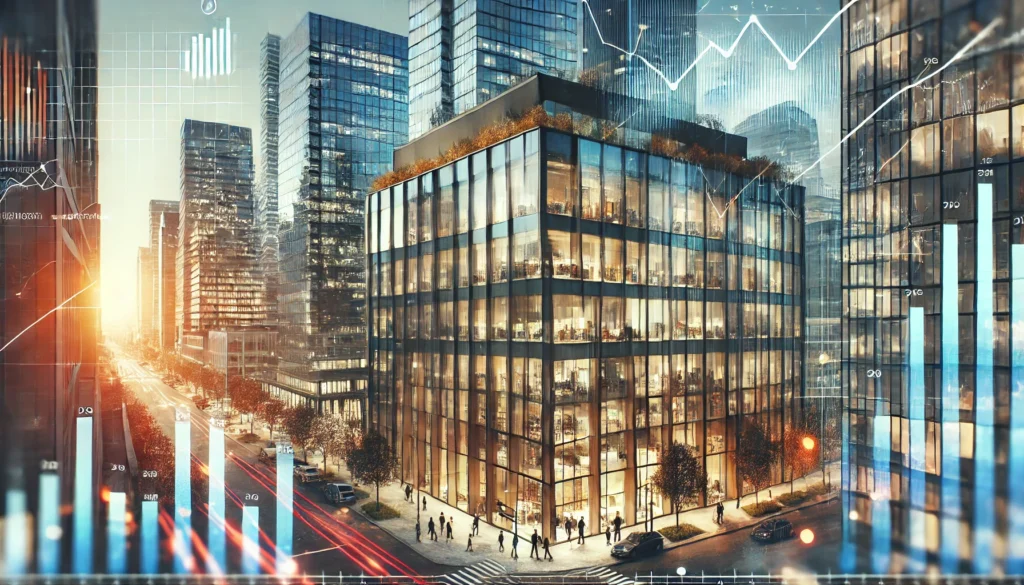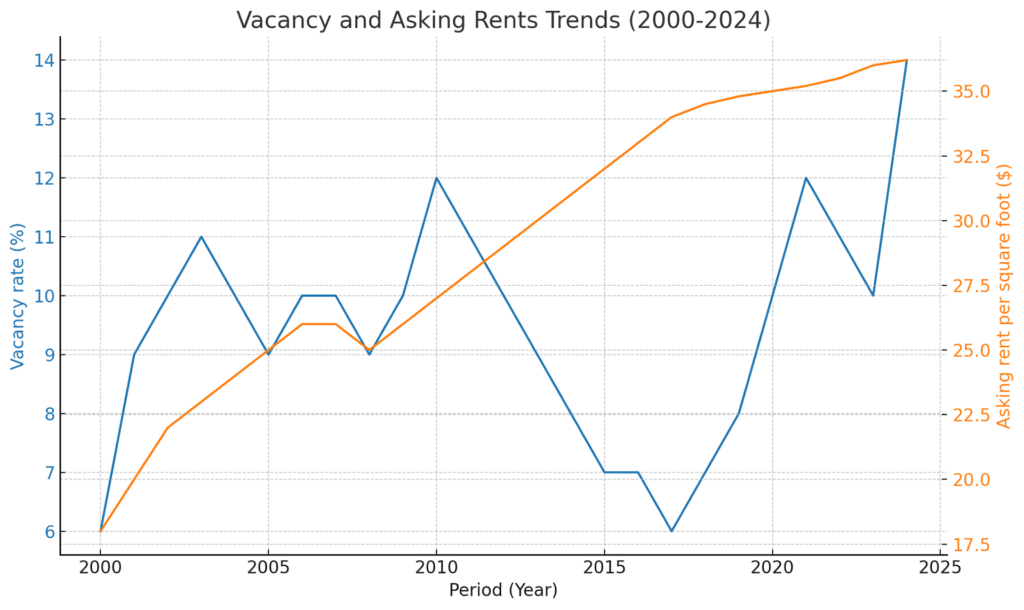Why Office Rents Keep Rising Despite High Vacancy Rates

In commercial real estate, it’s often expected that a rise in office vacancies would lead to a reduction in rental rates. After all, when office spaces go empty and demand falls, landlords typically lower rents to attract new tenants. Yet, what we’re seeing today defies that logic. Despite record-high vacancy rates, office rents are still climbing, particularly in newer, premium buildings. So, what’s driving this surprising trend?
The Vacancy Paradox
Office vacancy rates are at unprecedented levels, with many tenants returning excess space to landlords. In previous real estate cycles, rising vacancy usually meant landlords would slash rents to retain tenants. If they didn’t act quickly, businesses would often take their money elsewhere, opting for lower-cost leases in nearby properties. However, the current situation is different—rents are rising even as the demand for office space remains sluggish.

Why Office Rents Keep Rising Despite High Vacancy Rates – Why Aren’t Rents Falling?
It would be too simple to attribute this trend to landlords being opportunistic. Nor is it realistic to think that property owners are ignoring the surplus of empty office spaces. The reality is more complex, shaped by several factors that go beyond supply and demand.
Investing in High-Quality Spaces
One of the key reasons rents are climbing is that landlords are pouring significant resources into upgrading and modernizing office spaces. Today’s tenants aren’t just looking for affordable rent; they want workspaces that are flexible, modern, and equipped with amenities that support a hybrid work model. As a result, many tenants are willing to pay a premium for spaces that meet these higher standards.
This demand for quality allows landlords to maintain or even increase asking rents, despite higher vacancy rates. Upgrading office buildings to offer modern conveniences requires a large upfront investment, so landlords must charge higher rents to cover these costs and remain competitive. For many, it’s no longer just about filling empty offices; it’s about attracting the right kind of tenant who values a high-quality environment.
Inflation and Rising Costs
Another factor at play is inflation. Since 2019, prices have risen significantly across various sectors, and the cost of maintaining office properties has gone up accordingly. From labor to construction materials, landlords are facing increased operational expenses, which are reflected in rising asking rents. Although office rents haven’t surged as quickly as consumer prices, inflation is certainly contributing to the steady increase in rental rates.
The Truth Behind Effective Rents
While asking rents are increasing, it’s important to note that the effective rents—what tenants actually pay after lease negotiations—are often lower. To attract tenants in a competitive market, landlords are offering various concessions, such as free rent periods or allowances for office buildouts. These incentives reduce the overall cost for tenants, even though the headline rental rates may appear higher.
This balancing act allows landlords to maintain a facade of higher rents, while the true cost to tenants is mitigated through these deals and perks.
Why Office Rents Keep Rising Despite High Vacancy Rates – Looking Back to Look Ahead
Although it might seem unusual to see rents rise during a period of high vacancy, this isn’t without precedent. By examining previous real estate cycles, we can see that similar patterns have occurred before, where rental rates continued to climb despite lower occupancy levels. Learning from the past can offer insights into what may happen in the future.
Ultimately, the upward trend in office rents reflects a market that is shifting toward quality over quantity. Tenants are demanding more from their workspaces, and landlords are responding by making significant investments in their properties. As a result, higher rents are often necessary to justify these improvements, even when vacancy rates remain high. As the market continues to evolve, understanding these nuances is essential for both tenants and landlords navigating the new normal. This era of rising rents, despite high vacancies, is driven by the need for modern, flexible office spaces that meet the demands of a changing workforce. For now, the upward pressure on rents seems set to continue, as landlords strive to attract tenants with higher expectations for their work environments.
